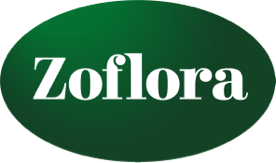How to Stay Safe with Zoflora and Pets with Cat the Vet
Zoflora is safe to use in your home if you have pets but it is important you follow the instructions for use, as with any other household cleaning product, and don’t let your furry family onto the floors or surfaces until they are completely dry. If you have fish or reptiles in tanks, make sure they are covered over while you clean with Zoflora and for at least half an hour afterwards.
However, even with the best will in the world, it is possible for accidents to happen and for curious pets to come into contact with undiluted, or incorrectly diluted, Zoflora. And even though these situations are unusual, it is important to know how to prevent them, the signs to look out for in your pets and what to do if you are worried.
Keep Zoflora out of the way of curious pets!
The pets most at risk are our cats and dogs because they are usually free to roam about our homes and can be fairly nosey! However, don’t forget house rabbits if you have them, they also enjoy exploring and investigating new smells!
Make sure the cupboards where you store your Zoflora are secure and consider wiping down the bottles after use, so there are no undiluted drips on the outside. Also, take care to keep the mop and bucket out of reach, particularly while you are cleaning. Even small splashes of undiluted Zoflora could cause problems and our pets are sensitive enough to be able to tell where the droplets are.

How might Zoflora get on my pet?
The biggest risk to your pet is if they come into contact with Zoflora which has not been diluted or has been diluted incorrectly and used on a surface which has not been allowed to dry.
The most likely ways for your pet to have a negative reaction to Zoflora are; by licking or sniffing at it, walking on floors which haven’t fully dried; or brushing up against mops, cupboard doors or undiluted splashes and then grooming the residue off their coats. This last one is particularly prevalent in cats.
What are the signs that my pet might have come into contact with neat, or incorrectly diluted Zoflora?
If the paws are affected, your pet will likely be licking or nibbling intensely at one or more of their feet. Look between the pads on the underside and between the toes themselves. The skin may be red, moist or sore to the touch. If you are not sure if there is an issue, look at the other feet and see if there is a difference in the skin’s tone.
Around the head, eyes and nose are other common areas for problems to be apparent, because of our pet’s habits of sniffing and licking at new things. Look out for swelling around the muzzle where the whiskers are, sores on the nose or a puffiness around the eyes. These areas, again, may be uncomfortable for your pet.
If your pet has licked at the Zoflora then they will likely develop ulcers in their mouths and on their tongues. This is a particular issue in cats, who have such a need to groom substances off their coats, they will do so even if the taste or sensation is unpleasant. Signs there is a problem may not be obvious immediately but most pets will start to drool excessively and although they will be interested in food, they may struggle to eat or turn away from the bowl because of the soreness.

However, you can help your pet while you wait to be seen!
Thoroughly rinse any affected paws in cool running water, if your pet will tolerate it. Otherwise soak their feet in a bowl of cool water or wipe the paws down with a damp flannel. This will remove any trace of Zoflora from the skin and help to soothe them as well.
If your pet has a sore or swollen face, wipe it down with a damp cloth, taking care around the eyes. This again will help remove any Zoflora and also be cooling for the skin.
If you think you spot areas on their coat which look like liquid Zoflora, again, washing or wiping this as soon as you see it will prevent your pet from grooming it off. Dogs may tolerate being sluiced down in the shower but most cats will only allow wiping but try to make the cloth as wet as possible to dilute and remove all traces.
If your pet is licking or nibbling at themselves, try to stop them if possible because they will only cause more damage. Washing and wiping the skin will reduce the irritation, distract them with toys or treats or, if you have one, you can put on a cone collar until you can get into the practice.




